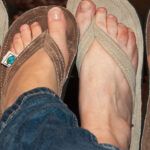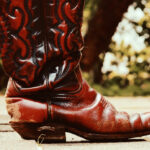Do you have ski boots that pinch and leave your feet aching at the end of the day? Here are some tips to make those boots more comfortable.
There’s nothing quite like a day on the slopes. The fresh air, the amazing views, and the adrenaline rush of skiing or snowboarding down a mountain. If you’re anything like me, then you’ll hate having cold feet when skiing. The good news is that there are ways to make your ski boots more comfortable.
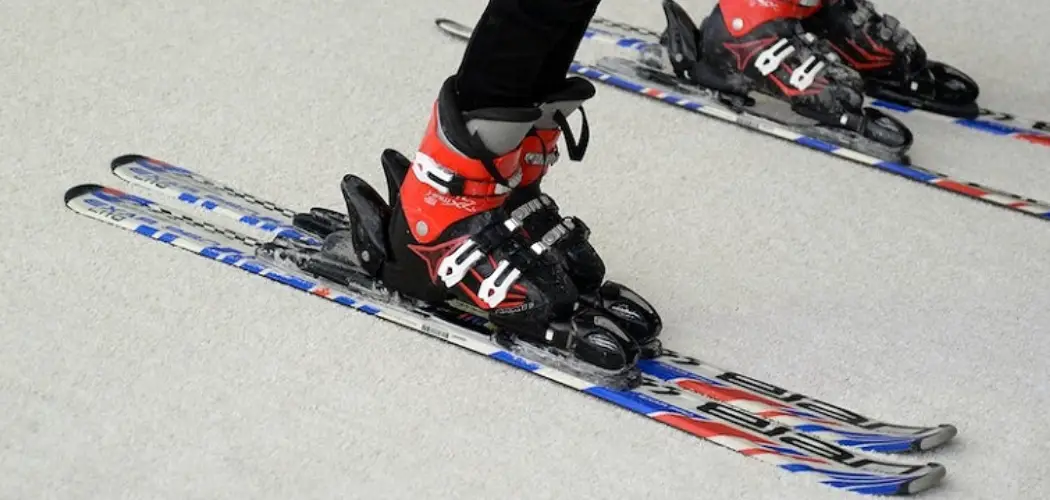
It’s no secret that ski boots can be uncomfortable. They’re stiff, often too tight, and can cause blisters. In this post, I’m going to share with you a few methods that have worked well for me on how to make ski boots more comfortable. So, if you’re looking for tips on how to make your ski boots more comfortable, then keep reading!
What Can Make Ski Boots Uncomfortable?
Before we dive into making ski boots more comfortable, let’s discuss why they can be uncomfortable in the first place.
- Ski boots are designed to fit snugly and support your feet and ankles while skiing. This means that they may not feel as comfortable as regular shoes or sneakers.
- Ski boots are often too small, causing them to pinch and rub against your feet.
- Ski boots may not be properly fitted or adjusted, leading to discomfort while skiing.
- Ski boots can also become uncomfortable if they are not properly cared for and maintained.
- Another reason for discomfort in ski boots could be the type of socks you wear. It’s important to wear thick, insulated socks made for skiing to ensure that your feet stay warm and comfortable while on the slopes.
Overall, there are a few reasons why ski boots can be uncomfortable. But don’t worry, there are ways to make them more comfortable!
10 Easy Steps on How to Make Ski Boots More Comfortable:
Step 1: Choose the Right Size
Make sure your boots are the right size. This may seem an obvious step, but it’s important to ensure that your ski boots aren’t too small or too big. If they are too small, you can try getting them stretched out by a professional at a ski shop.
Step 2: Heat Mold the Liners
Many ski boots come with heat moldable liners. This means that they can be heated up and molded to the shape of your foot for a better fit. It’s best to have this done by a professional at a ski shop, but you can also do it yourself at home with an oven or hot water.
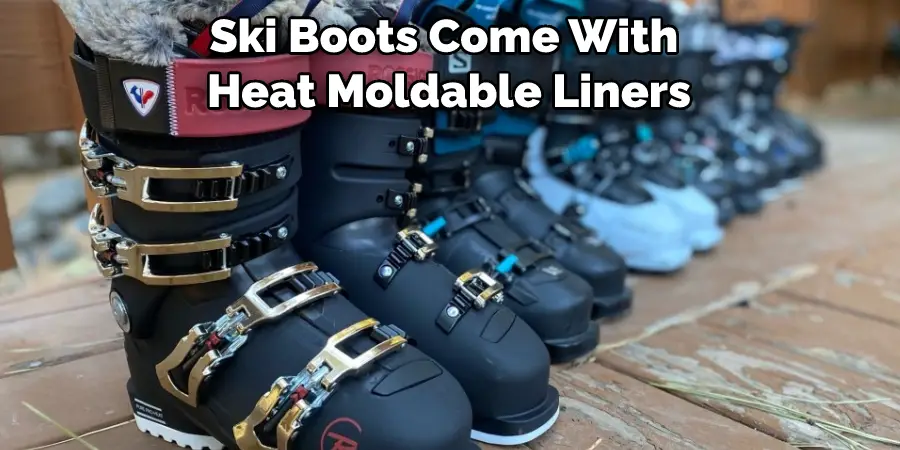
Step 3: Use Footbeds or Insoles
Using insoles or footbeds in your ski boots can provide added cushion and support for your feet. This can make them feel more comfortable while skiing. Be careful to choose insoles or footbeds specifically made for ski boots, as regular ones may not fit properly and can lead to discomfort.
Step 4: Wear the Right Socks
As mentioned before, wearing thick, insulated socks for skiing is important to keep your feet warm and comfortable. You can also try wearing a thin liner sock underneath your ski socks for added comfort and to prevent blisters. Because your feet will be in tight, snug ski boots all day, it’s a good idea to bring multiple pairs of socks and switch them out throughout the day to avoid sweat and moisture buildup.
Step 5: Use Moleskin or Tape
If you know that you have areas on your feet that often rub or get blisters, try using moleskin or tape to protect those spots in your boots. You can get moleskin at most drugstores, and it can provide added cushion and protection for any problem areas on your feet. Be careful not to cover too much of your foot, as you still need some ventilation and room for movement in the boot.
Step 6: Adjust the Boot Buckles
Ensure that the buckles on your boots are properly adjusted to provide support and comfort while skiing. Take the time to experiment with how tight or loose each buckle should be, paying close attention to any pressure points on your feet.
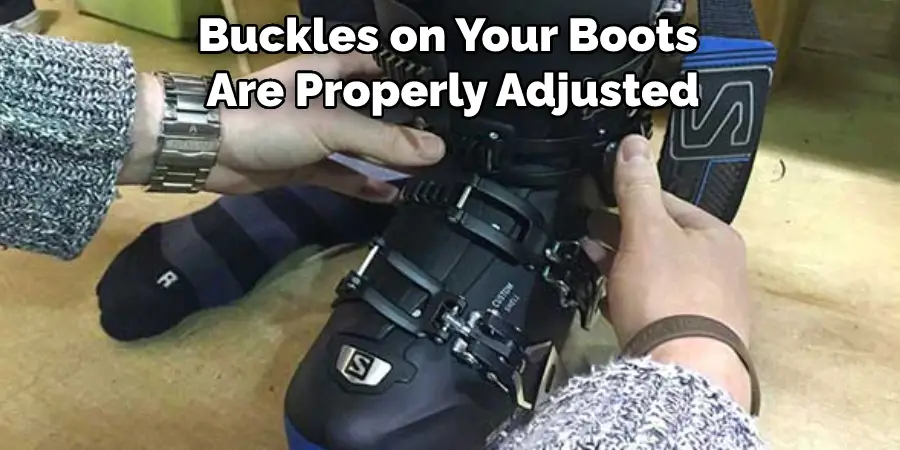
Step 7: Use Boot Warmers
Using boot warmers or heating pads in your ski boots can help keep your feet warm and comfortable. This can also prevent any discomfort from cold feet while skiing. So, make sure to pack some boot warmers or heating pads for those especially chilly days on the slopes.
Step 8: Use Boot Stretch Spray
Using a boot stretch spray on your ski boots can help make them more flexible and comfortable. It’s best to do this before heat molding the liners. Because ski boots often come stiff from the factory, using a boot stretch spray can help loosen them up and make for a better fit.
Step 9: Take Breaks
Don’t forget to take breaks while skiing and rest your feet. This can prevent discomfort and fatigue while on the slopes. Moreover, make sure to take off your boots at the end of a ski day and give your feet time to recover.
Step 10: Replace Old Boots
If your ski boots are old and worn out, it may be time to invest in a new pair. This can provide added comfort while skiing. Don’t wait until your boots are causing you discomfort or hindering your performance on the slopes. It’s important to have properly fitting and comfortable ski boots for a safe and enjoyable experience.
In conclusion, there are many steps you can take to make ski boots more comfortable. From properly sizing and fitting them to using insoles and moleskin, these tips can greatly improve the comfort of your ski boots. Don’t let discomfort stop you from enjoying a day on the slopes! Happy skiing!

5 Additional Tips and Tricks
- If your boots are too tight, try using professional boot stretching services or heat molding them at home.
- Make sure to lace up your boots properly to ensure a snug but comfortable fit.
- Use good quality insoles for added cushion and support.
- Wear thin, moisture-wicking socks to avoid excess bulk and sweat buildup.
- If possible, take breaks throughout the day to give your feet a rest and prevent discomfort.
Remember, properly fitting ski boots are essential for safety and performance on the slopes. However, with a little extra effort and attention to detail, you can also make them more comfortable to wear all day long.
You Can Check It Out To Break in Ski Boots
Is It Difficult to Break into Ski Boots?
First off, let’s address the elephant in the room – breaking into ski boots can be a real pain. It might feel like your feet are being squeezed, and blisters might form on your heels or toes.
But don’t worry, this is completely normal and breaking in ski boots is something every skier must go through.
This is because ski boots need to fit snugly to provide the necessary support and control while skiing.
So, it’s important to have a proper fitting from the start to prevent any discomfort or potential injury. But don’t despair – there are ways to make breaking in ski boots easier.
You Can Check It Out To Adjust Ski Boots for Wide Calves
Is It Normal for Your Feet to Hurt in Ski Boots?
It is normal for your feet to experience some discomfort or pain while breaking in ski boots. But this should not persist once they are properly broken in. If you continue to experience persistent pain or discomfort while wearing your ski boots, it may be a sign that they do not fit properly. You should have them adjusted or try a different pair. So, some initial discomfort is normal, but persistent pain is a red flag that something may be wrong with the fit of your boots.
What is Ski Boot Syndrome?
Ski boot syndrome, also known as foot compression neuropathy, is a condition that can occur from wearing tight ski boots for extended periods of time. Symptoms include numbness, tingling in the feet, pain, and decreased sensation. To prevent this, it’s important to have properly fitting ski boots and take breaks throughout the day to give your feet a rest.
If you notice any symptoms of ski boot syndrome, talk to a doctor or ski instructor for advice on alleviating the discomfort and preventing further injury. Also, be sure to warm up properly before skiing and stretch afterward to prevent muscle fatigue and tightness in the feet. Taking proper care of your feet while skiing can help ensure a safe and enjoyable experience on the slopes.
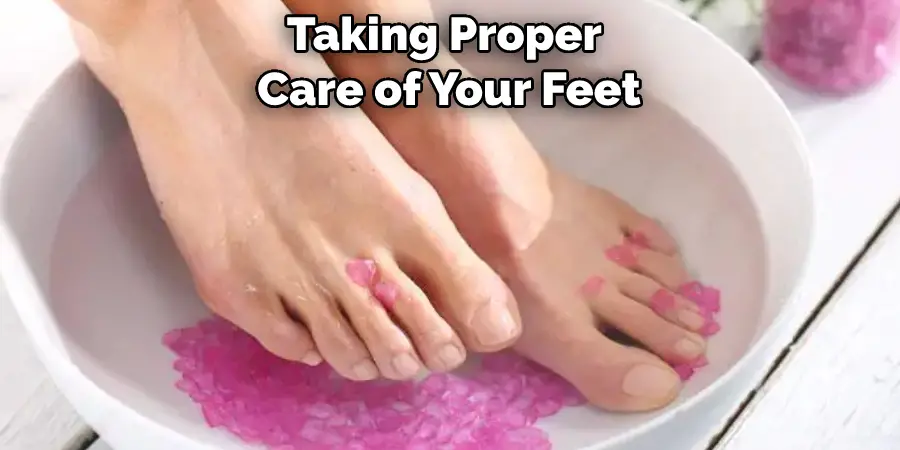
Conclusion
While it is possible to make ski boots more comfortable, it is important to remember that they will never be as comfortable as a good pair of running shoes. Skiing is a demanding sport, and your feet will always be under some stress while skiing.
However, if you follow the tips in this blog post, you should be able to find a very good level of comfort in your ski boots.
Hopefully, the article on how to make ski boots more comfortable was helpful to you in your search for a comfortable experience on the slopes. Happy skiing!



